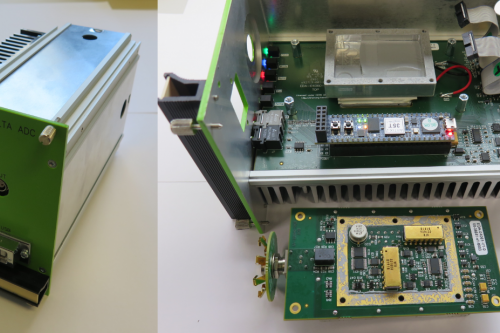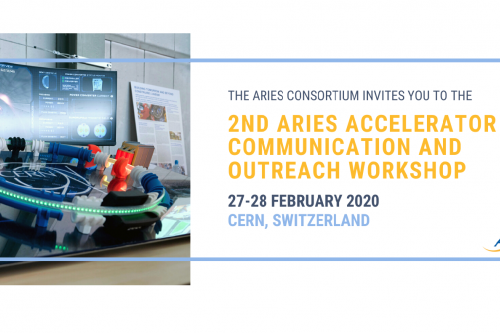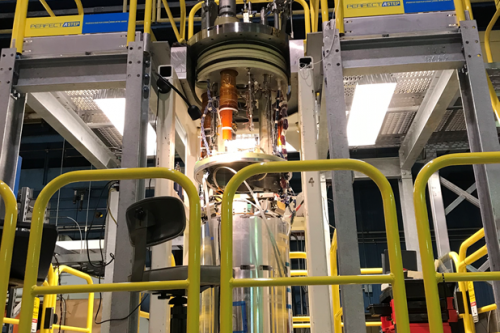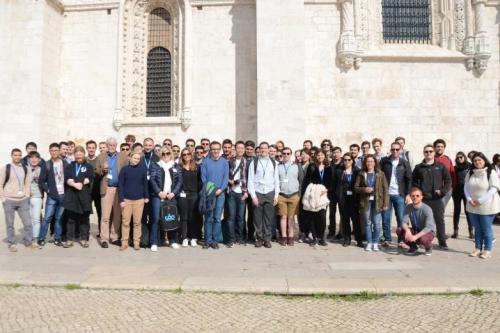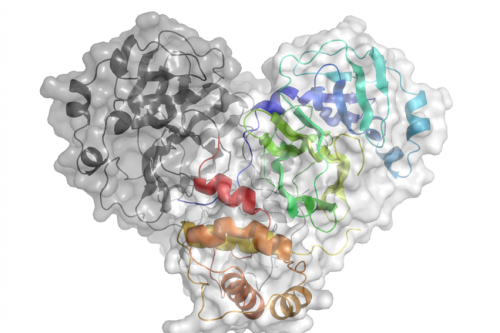March 2020
Welcome to Issue 32 of Accelerating News!
The first issue of 2020 finds the world a vastly different place since we published the previous issue.
It would be impossible not to acknowledge the global pandemic or its impact in the large research laboratories and academic institutions. Many events have been rescheduled or adapted in a global attempt at curtailing the spread of the new coronavirus, and most of us (those who can) are now working from home. Despite the global situation, science has not stopped, and so Accelerating News will continue to report on accelerator research and development. In fact, this issue brings you an update on how synchrotrons could be fundamental to the process of creating a vaccine against the new coronavirus.
The rest of Issue 32 focuses rather interestingly on superconductivity and new records achieved by superconducting magnets. A REBCO tape developed in the context of H2020 ARIES project could potentially support the next-generation of magnets at accelerators and other applications beyond particle physics. A collaboration of three national laboratories in the United States reached a new field record for a beam-focusing magnet, ready to be installed for the High-Luminosity run of the Large Hadron Collider (LHC). And a magnetic field record has also been broken at CERN by the first racetrack demonstrator magnet developed in the framework of the Future Circular Collider (FCC) Study.
Additionally, upgrades and developments continue for the operation of the LHC at higher luminosity: a new high-precision digitizer was developed to properly measure the electric current in the accelerator’s power converters, and CERN’s Proton Synchrotron was upgraded for increased injection energy. For the future collider machines, the EuroCirCol project delivers an overall integrated design for the cryogenic beam vacuum system for a future 100 TeV circular proton collider. A story of knowledge transfer from accelerator science to telecommunications, a communication and outreach workshop, and a report from the CERN Accelerator School that took place in 2019 bring this issue to a close.
The Editorial Team hopes our readers enjoy this issue, that it offers a break in the midst of gloomy news about the global state of affairs, and leaves our best wishes to all our readers. Happy reading!
Daniela Antonio, for the Accelerating News Editorial Team
A novel beam screen technology for FCC-hh
EuroCirCol project delivers an overall integrated design for the cryogenic beam vacuum system for the challenging environment of a future 100 TeV circular proton collider.
ARIES consortium produces world-class HTS tapes
REBCO conductor tapes reached a world-record critical current at 20T, strengthening the possibilities for a demonstrator of high-level accelerator magnets. Lucio Rossi, leader of the HL-LHC project, explains.
From laser alignment to laser communication
How a technology developed at CERN for ultra-precise measurement purposes may help Aircision connect our future telecommunications.
Proton Synchrotron prepared for higher injection energies
CERN’s oldest working accelerator has a new injection kicker magnet and will soon receive a new septum as well.
High-Precision Digitizer for High Luminosity LHC
CERN developed a digitizer to ensure the high-precision measurement of the current delivered to the superconducting magnets of the HL-LHC.
Demonstrator racetrack dipole magnet produces record peak field
A magnetic field record has been broken at CERN by the first racetrack demonstrator magnet developed in the framework of the FCC Study.
Building on the community’s collective experience on accelerator communication
Members from the accelerator communication community gathered at CERN for the 2nd Accelerator Communication and Outreach workshop.
HL-LHC superconducting quadrupole successfully tested
Advanced niobium-tin accelerator magnets for the LHC upgrade developed at US labs are also carving a path towards future energy-frontier colliders.
Specialized School on Novel Accelerators for Young Scientists
The Spring 2019 edition of the CERN Accelerator School took place in Tecnico Lisboa and focused on High-Gradient Wakefield Acceleration.
Synchrotrons on the frontline
Tessa Charles describes the impressive progress being made by synchrotron X-ray facilities to solve the structure of SARS-CoV-2 — a first step towards the development of drugs and vaccines.

.png%3Fitok=SawmX7_D)


